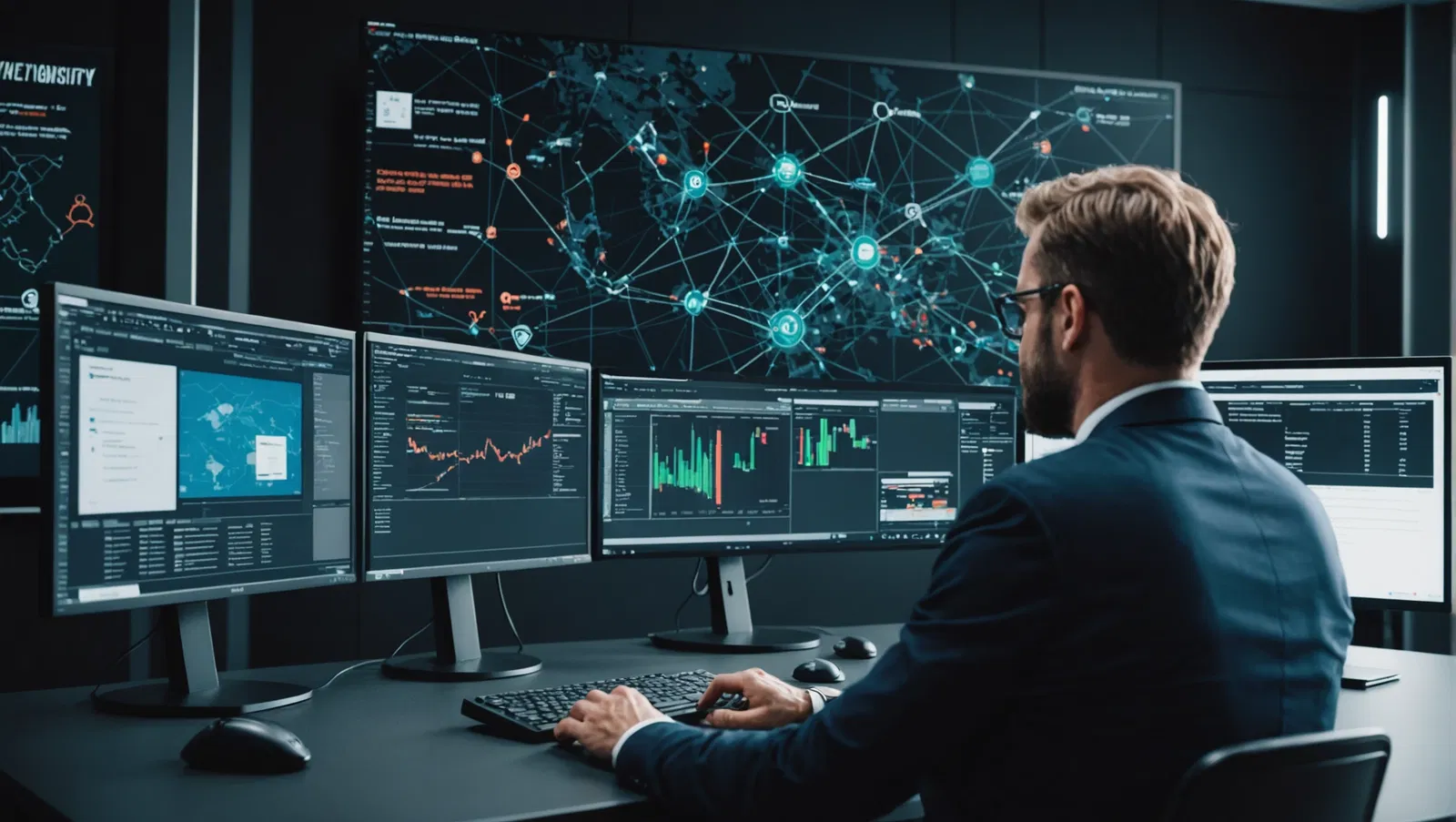
The shift toward remote work has become a prevailing trend. As businesses navigate this new terrain, ensuring robust security measures is paramount. The topic of maximizing security in a remote world addresses this critical need. This discussion will explore six essential strategies that businesses can implement to safeguard their operations, data, and employees in an increasingly remote environment. From leveraging encryption and multi-factor authentication to fostering a culture of cyber awareness, these strategies are designed to fortify organizations against evolving cyber threats. By delving into these key approaches, businesses can proactively address security concerns and bolster their resilience in the face of remote work challenges.
Implementing Secure Remote Access
Implementing secure remote access has become more crucial than ever. With the rise of remote work, it’s essential for organizations to ensure that their employees can securely access company resources from any location. This section will discuss the key methods for achieving secure remote access.
Utilizing Virtual Private Networks (VPNs)
Virtual Private Networks (VPNs) play a pivotal role in securing remote access. They create a secure, encrypted connection between a user and the company’s network, effectively shielding data from potential threats. By implementing VPNs, organizations can ensure that sensitive information remains protected, regardless of the user’s location.
Multi-Factor Authentication (MFA)
Multi-Factor Authentication (MFA) adds an extra layer of security by requiring users to provide multiple forms of verification before accessing company systems. This often includes a combination of passwords, security tokens, biometric verification, or one-time codes. By implementing MFA, organizations can significantly reduce the risk of unauthorized access, even if login credentials are compromised.
Secure Network Infrastructure
Establishing a secure network infrastructure is fundamental to ensuring secure remote access. This involves implementing robust firewalls, intrusion detection systems, and regular security updates to safeguard against potential cyber threats. Additionally, enforcing strict access controls and regular security audits can further fortify the network’s defenses.
Secure Remote Access Policies
Creating and enforcing secure remote access policies is essential for mitigating potential security risks. Organizations should define clear guidelines for remote access, including acceptable use policies, device security requirements, and incident response procedures. Educating employees about these policies and providing regular training on remote access security best practices can help foster a security-conscious culture within the organization.
Endpoint Security Measures
In addition to network-level security, organizations should prioritize endpoint security measures to protect devices used for remote access. This includes implementing anti-malware software, encrypting data on devices, and enabling remote device management capabilities. By addressing endpoint security, organizations can mitigate the risk of unauthorized access or data breaches stemming from compromised remote devices.
Continuous Monitoring and Incident Response
Establishing a robust system for continuous monitoring and incident response is critical for maintaining secure remote access. This involves implementing security information and event management (SIEM) systems to detect and respond to potential security incidents in real-time. Additionally, organizations should have well-defined incident response plans in place to address security breaches or unauthorized access attempts promptly.
User Education and Awareness
Lastly, fostering a culture of user education and awareness is key to ensuring secure remote access. Organizations should regularly educate employees about the latest security threats, best practices for remote access, and the importance of adhering to security policies. By promoting a security-conscious mindset among employees, organizations can strengthen their overall remote access security posture.
By incorporating these comprehensive security measures, organizations can establish a strong foundation for secure remote access, enabling employees to work remotely with confidence while maintaining the integrity of sensitive company data.
Section: Educating Employees on Security Best Practices
Educating employees on security best practices is crucial for fortifying organizational defenses against cyber threats. By equipping employees with the knowledge and tools to identify and respond to potential security risks, organizations can establish a proactive and resilient security posture. This section delves into the critical importance of employee training, outlines best practices for bolstering remote work security, and elucidates the process of cultivating a robust culture of security awareness within the workplace.
Importance of Employee Training
Safeguarding organizational assets and sensitive information hinges on the effectiveness of employee training. It is imperative to underscore the significance of recognizing and mitigating security threats effectively. Comprehensive training programs should encompass a spectrum of topics, including the identification of phishing attempts, the formulation of robust password strategies, and the comprehension of social engineering tactics. Through consistent and current training initiatives, employees can cultivate a vigilant and proactive approach to security, thereby fortifying the organization’s overall resilience.
Best Practices for Remote Work Security
The prevalent shift towards remote work necessitates the establishment of robust security protocols outside the traditional office environment. This entails the implementation of secure Virtual Private Networks (VPNs), the encryption of data transmitted and stored remotely, and a cautious approach towards public Wi-Fi usage. Furthermore, employees should be encouraged to adhere to company policies governing data access and storage, as well as regularly updating their devices. By adhering to these best practices, organizations can effectively mitigate the inherent security risks associated with remote work while supporting a productive and secure remote work environment.
Creating a Culture of Security Awareness
Nurturing a culture of security awareness entails instilling a collective sense of responsibility and vigilance among employees. It demands consistent communication regarding emerging security threats and the potential ramifications of breaches. Encouraging open dialogue and the reporting of security incidents fosters a proactive security culture. By integrating security awareness into the core values of the organization, employees become steadfast guardians of the company’s digital assets, thereby contributing to a robust and resilient security ecosystem.
Utilizing Advanced Endpoint Security Solutions
Endpoint Protection Platforms (EPPs): Enhancing Threat Prevention.
Endpoint Detection and Response (EDR) Systems: Advanced Threat Detection and Response Capabilities.
Implementing Data Loss Prevention (DLP) Measures: Safeguarding Sensitive Information.
In the modern landscape of cybersecurity, organizations face increasingly sophisticated threats. To combat these challenges, the utilization of advanced endpoint security solutions has become paramount. Endpoint Protection Platforms (EPPs) form the first line of defense, offering comprehensive threat prevention capabilities that extend across all endpoints within an organization’s network. These platforms provide real-time protection, proactive threat hunting, and robust incident response features, thereby bolstering the organization’s security posture.
Endpoint Detection and Response (EDR) Systems play a crucial role in proactive threat detection and response. By continuously monitoring and analyzing endpoint activities, these systems can swiftly identify and mitigate potential threats, minimizing the risk of security breaches. EDR systems empower security teams with the ability to investigate incidents, identify the scope and impact of an attack, and proactively respond to security incidents, thereby fortifying the organization’s overall security resilience.
Implementing Data Loss Prevention (DLP) Measures is essential for safeguarding sensitive information. By employing advanced DLP solutions, organizations can enforce policies that prevent unauthorized access and exfiltration of sensitive data. These measures help maintain compliance with data protection regulations and mitigate the risk of data breaches, thereby safeguarding the organization’s reputation and preserving customer trust.
The effective utilization of advanced endpoint security solutions, including EPPs, EDR systems, and DLP measures, is imperative for organizations seeking to fortify their defense against evolving cybersecurity threats. By integrating these solutions into their security architecture, organizations can enhance their ability to detect, prevent, and respond to security incidents, ultimately mitigating risk and safeguarding critical assets.
Establishing Robust Data Encryption Measures
Data encryption is crucial for safeguarding sensitive information. Encrypting data in transit and at rest ensures that even if unauthorized persons gain access to the data, they won’t be able to decipher it. This is achieved through the use of strong encryption algorithms and protocols. Encryption in transit involves securing data as it moves from one location to another, such as between servers or from a user’s device to a server. Encryption at rest, on the other hand, involves securing data that is stored in databases, file systems, or other repositories. Implementing robust encryption measures for both data in transit and at rest is fundamental to maintaining the integrity and confidentiality of the information.
Importance of Encryption in Protecting Sensitive Information
The protection of sensitive information is of utmost importance. Encryption plays a pivotal role in ensuring that this information remains secure and uncompromised. It helps in preventing data breaches, unauthorized access, and data theft. Additionally, compliance regulations such as GDPR, HIPAA, and PCI DSS require organizations to implement strong encryption measures to protect sensitive data. Encryption not only safeguards the data from external threats but also mitigates the risks associated with internal data mishandling or unauthorized access.
Choosing the Right Encryption Tools
Selecting the appropriate encryption tools is a critical decision for any organization. The chosen tools should align with the specific security requirements and compliance standards of the organization. Factors such as encryption strength, ease of implementation, and compatibility with existing systems must be carefully considered. It’s essential to assess the capabilities of encryption solutions in terms of key management, access controls, and audit trails. Moreover, the encryption tools should support the encryption of data across various platforms and devices, ensuring a consistent level of protection throughout the organization’s infrastructure. In addition, regular evaluation and updating of encryption technologies are essential to address emerging threats and vulnerabilities, thus maintaining robust data security measures.
Implementing End-to-End Encryption
End-to-end encryption is a method of secure communication that prevents third-parties from accessing data while it’s transferred from one end system or device to another. This approach ensures that only the sender and intended recipient can read the data. End-to-end encryption is crucial for protecting sensitive communications and transactions, especially in digital messaging platforms, online banking, and e-commerce websites. By implementing end-to-end encryption, organizations can assure their users that their data is secure, fostering trust and confidence in their services.
Securing Encryption Keys
In addition to selecting robust encryption algorithms, securing encryption keys is equally important. Encryption keys are used to encrypt and decrypt data, and if compromised, can lead to unauthorized access and data exposure. Organizations should employ secure key management practices to safeguard encryption keys. This involves implementing access controls, regular key rotation, and secure storage of keys. Additionally, the use of hardware security modules (HSMs) can further enhance the protection of encryption keys, preventing unauthorized access or tampering.
Conclusion
Establishing robust data encryption measures is imperative for safeguarding sensitive information from unauthorized access and data breaches. Encryption in transit and at rest, the importance of encryption in protecting sensitive information, choosing the right encryption tools, implementing end-to-end encryption, and securing encryption keys are all essential components of a comprehensive data security strategy. By prioritizing data encryption and adhering to best practices in encryption implementation and key management, organizations can effectively mitigate security risks and ensure the confidentiality and integrity of their data.
Conclusion
Maximizing security in a remote world is vital for businesses to protect sensitive data and maintain operational integrity. By implementing the six essential strategies outlined in this blog, including robust encryption, continuous employee training, and multi-factor authentication, organizations can significantly enhance their cybersecurity posture. As remote work becomes increasingly prevalent, investing in comprehensive security measures is not just a best practice, but a necessity for safeguarding business operations and customer trust.






